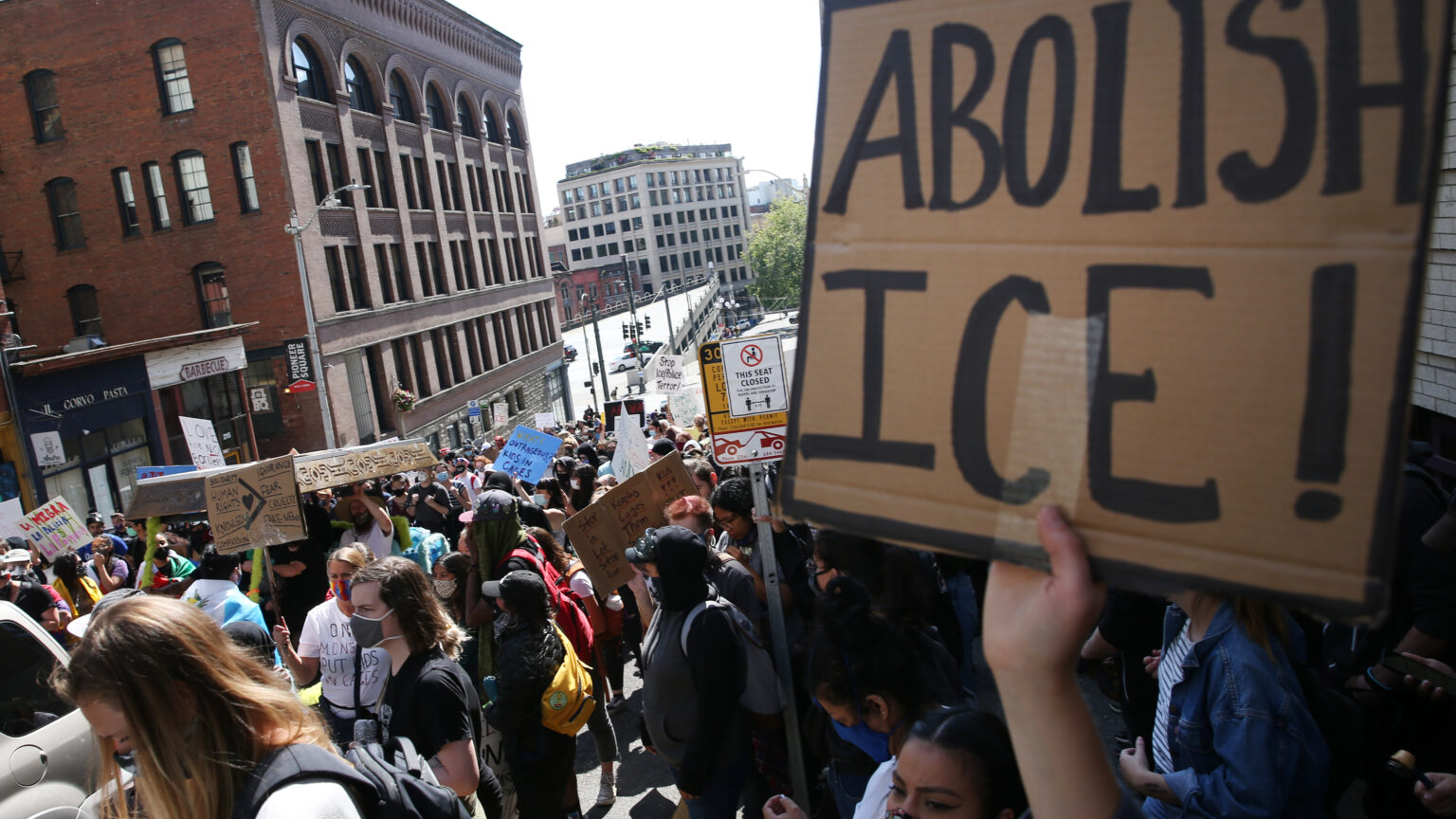Discover how the new ICE law is shaking up the nail industry in the US. Explore legal risks, predictions for 2026, and tips for salon owners to stay compliant and competitive.
Introduction to the New ICE Law
The U.S. nail industry, long dominated by hardworking immigrants, is now unstable. In early 2025, new enforcement protocols by Immigration and Customs Enforcement (ICE) went into effect, drastically altering the workplace landscape for businesses employing undocumented labor, with nail salons at the epicenter. These changes, aimed at stricter immigration control, are having ripple effects across salons from Los Angeles to New York City.

Background of the Executive Order
Signed into law in January 2025, the executive order reversed protections for undocumented individuals in workplaces deemed “sensitive locations,” such as clinics, schools, and places of worship. This pivot allowed ICE to intensify raids in small businesses, including nail salons.
Key Changes to ICE Enforcement
Unlike past policies focusing on large-scale immigration networks, the new rules emphasize worksite compliance. ICE is now empowered to:
- Conduct spontaneous inspections.
- Issue I‑9 audits with just 72 hours’ notice.
- Penalize employers for documentation errors — even unintentional ones.
Timeline of Implementation
The policy was rolled out in Q1 of 2025, escalating enforcement by mid-year. Nail salons, especially those operated by Vietnamese, Korean, and Chinese communities, began to report ICE visits and increased scrutiny as early as April.
Understanding ICE’s New Worksite Enforcement Rules
Rescinding of “Sensitive Locations” Protections
Salons were previously shielded under “sensitive location” classifications, but now ICE officers can conduct operations in public-facing business areas without judicial warrants.
Expanded Use of I‑9 Audits
Businesses must verify every employee’s work eligibility using Form I‑9. Failing to store or update these forms can result in significant fines or criminal prosecution.
Unannounced Inspections and Raids
HSI (Homeland Security Investigations) agents can now enter any publicly accessible part of a business. They can inspect backrooms, employee lounges, or even homes tied to illegal employment if they have a judicial warrant.

Immediate Effects on the Nail Salon Industry in 2025
The first half of 2025 saw a sharp uptick in ICE’s presence in cities with high concentrations of immigrant-operated salons, notably Los Angeles, Houston, New York, and Atlanta. Entire salon teams vanished overnight in some cases. Reports from online communities and immigrant support groups detail widespread fear, with undocumented technicians choosing not to show up for work or quitting the profession altogether.
Worker Detentions and Deportations
ICE detentions weren’t limited to undocumented workers. Some salon owners also faced charges for misclassification, failing to maintain I‑9 records, or knowingly employing unauthorized workers. In some areas, deportations surged, especially for technicians without Temporary Protected Status (TPS) or asylum claims.
Salon Shutdowns After ICE Raids
The consequences of raids extended far beyond legal penalties. Some salons closed permanently after losing their workforce. Others suffered reputational damage, leading to a loss of clientele who viewed them as unstable or untrustworthy. Business owners also faced delays in reopening due to legal entanglements and inspections.
Economic Ripples Across Communities
The nail industry contributes billions to the U.S. economy, especially in densely populated urban centers. As ICE enforcement escalated, ripple effects impacted beauty supply distributors, training schools, and nearby businesses. Entire immigrant neighborhoods felt the blow, compounding financial and social stress.

Personal Accounts from Nail Salon Workers and Owners
Fear and Uncertainty in Immigrant Communities
Many immigrant families rely on salon work as a pathway to financial stability. With the threat of raids looming daily, workers reported high anxiety levels, lack of sleep, and increasing isolation. Some moved out of state or into informal work arrangements to avoid attention.
First-Hand Reddit Reports
Reddit threads in immigrant and beauty professional subreddits revealed chilling stories: “My nail lady got deported last week,” one user shared. Others posted about salon workers disappearing without a trace, fearful of ICE sweep-ups.
Psychological and Financial Strain
The emotional toll on both business owners and workers has been immense. Owners faced difficult choices: restructure their business or risk legal action. Meanwhile, workers without documentation feared losing the only profession they’ve known, often with little notice or legal protection.
Challenges Unique to the Nail Salon Sector
Language Barriers and Legal Illiteracy
Many salon operators and employees are not fluent in English and are unfamiliar with U.S. labor or immigration law. This makes navigating legal documents like the I‑9 form or understanding audit notices extremely difficult.
Prevalence of Informal Labor Practices
Nail salons have long relied on informal labor systems, from “under the table” cash payments to verbal agreements. However, these practices are now under scrutiny, leaving many salons vulnerable to heavy penalties.
Misclassification and Lack of Contracts
Salon workers are frequently treated as independent contractors (1099), even though they meet the criteria of W‑2 employees. This misclassification, often unintentional, is aggressively investigated and penalized by ICE and Department of Labor audits.
Legal Gray Zones and Controversies
ICE’s Entry into Private Spaces Without Warrants
Though ICE requires a judicial warrant to access non-public areas, some reports suggest that officers have entered break rooms or private offices without one. This raises serious civil rights questions, with advocacy groups stepping in to provide legal challenges.
Disputes Over Independent Contractor Status
One of the thorniest legal issues revolves around worker classification. When salon owners label a technician as a 1099 contractor but still dictate hours, uniforms, or tools, it opens the door to legal scrutiny.
Civil Rights Groups’ Response
Organizations like the ACLU and local immigrant aid centers have begun offering rapid-response legal teams. Hotlines and Know Your Rights workshops are becoming more common, especially in metro areas targeted by ICE.

How Salon Owners Can Prepare for ICE Audits
Preparing Employment Records
Salon owners must conduct internal audits of all employee files. This includes maintaining properly completed I‑9s for every worker and keeping these records for three years after hiring or one year after employment ends — whichever is later.
Employee Training on ICE Protocol
Staff should be trained to remain calm during an inspection. Receptionists or managers must know to ask ICE agents for judicial warrants and should never consent to searches of private areas without proper documentation.
Legal Consultation Best Practices
Salon owners are advised to consult immigration and labor attorneys before issues arise. Proactive legal review can save thousands in fines and even prevent closure. Many law firms now offer compliance packages tailored to beauty and wellness businesses.
The Role of Advocacy and Legal Support Organizations
How NGOs Are Helping Nail Workers
Nonprofits like the Asian Americans Advancing Justice (AAAJ) and National Day Laborer Organizing Network (NDLON) have ramped up support efforts. They offer legal aid, informational materials in native languages, and connections to safe employment networks.

Access to Legal Aid and Rapid Response Networks
Some states and cities, particularly sanctuary cities, have launched local hotlines for detained individuals. These networks can dispatch legal teams or activists to ICE-affected businesses within hours.
State-Specific Support in CA, NY, and TX
States like California and New York have started offering grants or assistance to immigrant-owned businesses for compliance training and legal aid. Though more aggressive in ICE cooperation, Texas has grassroots organizations fighting back on the local level.

Industry Predictions for Late 2025 and 2026
Shrinking Workforce Due to Deportations
If ICE raids continue at the current pace, the U.S. nail industry will likely see a significant decrease in available skilled labor. This could result in higher service costs, longer wait times, and declining service quality.
Shift Toward Automation and Technology
In response, some salons are investing in booking automation, digital payroll systems, and even AI-driven nail design tools. These innovations help streamline operations while ensuring traceable, legal employment records.
Rise of Licensed Professionals and Formalization
As a result of enforcement pressure, more salons are expected to push for technician licensing, use W‑2 employment contracts, and attendance at accredited beauty schools. This will professionalize the industry but may also drive out low-income, undocumented workers.
Proactive Solutions for Salon Operators
Switching to Legal Hiring Practices
Salon owners must shift toward fully legal employment practices. This includes hiring only individuals who can produce valid work authorization documents and retaining proper records for every staff member.
Offering Licensing Support to Workers
Some proactive salon owners pay their workers to attend state licensing programs or ESL classes to prepare for formal licensure exams. This approach not only ensures compliance but also improves service quality and professionalism.
Joining Trade Associations for Resources
Beauty and salon trade groups often provide up-to-date compliance training, sample legal documents, and industry-specific legal support. Joining such networks can offer protection and shared knowledge during turbulent times.

Digitalization and the Future of Nail Services
Appointment-Only Studios and Digital Bookkeeping
As salons work to reduce legal risks, many are switching to appointment-only systems with digital check-ins. This model ensures client data tracking and limits the number of people on-site during inspections.
Rise of Mobile Nail Services
Some displaced nail technicians are turning to mobile services, bringing nail art directly to clients’ homes. Though this creates new logistical and legal challenges, it offers flexibility and anonymity in uncertain times.
Greater Transparency and Client Education
More salons proudly display their licensing credentials and employee records, reassuring clients that they support ethical businesses. Websites now include FAQs about employment practices, reflecting the demand for transparency in a post-ICE reform world.
Lessons from Other Vulnerable Industries
Agriculture and Construction Comparisons
Like nail salons, agriculture and construction have long relied on undocumented labor. These industries faced similar crackdowns in the past, and their transitions — including guest worker programs and legal labor sourcing — may provide roadmaps for salons.
Lessons from the Restaurant Sector
Restaurants faced waves of ICE audits in the late 2010s and adapted by shifting toward digital payrolls, employee background checks, and legal staffing agencies. These models are now being explored by salon owners seeking to do the same.
What Nail Salons Can Learn
The key lesson is this: resistance without preparation is costly. Legal adaptation, worker training, and compliance do not eliminate risk but create a resilient foundation that can withstand external pressures.
Frequently Asked Questions (FAQs)
-
Is it legal to hire undocumented nail technicians?
No. Federal law prohibits employers from knowingly hiring or continuing to employ anyone not authorized to work in the U.S. Employers must verify work eligibility through Form I‑9.
-
What documents do I need to verify work eligibility?
Employees must present a combination of identity and employment authorization documents. Acceptable documents include a U.S. passport, green card, or a combination like a driver’s license and Social Security card.
-
Can ICE enter a salon without warning?
ICE can enter public areas without a warrant, but needs a judicial warrant to access non-public spaces like break rooms or offices. Never consent to a search unless the warrant is valid and specific.
-
What happens if I misclassify a worker?
If you classify an employee as a contractor and the IRS or Department of Labor disagrees, you may owe back wages, taxes, and face potential fines. ICE may use misclassification as a reason to audit.
-
How can I protect my salon from legal trouble?
Maintain thorough and updated I‑9 documentation, consult an attorney on labor classifications, conduct internal audits, and ensure all employees are legally authorized to work in the U.S.
-
Are there any safe states or cities?
Sanctuary cities often limit local law enforcement’s cooperation with ICE. However, federal ICE operations can still occur in any state. It’s best to assume compliance is necessary regardless of location.




